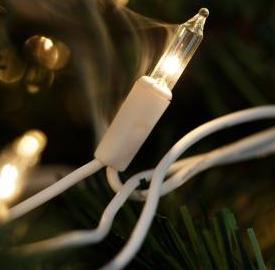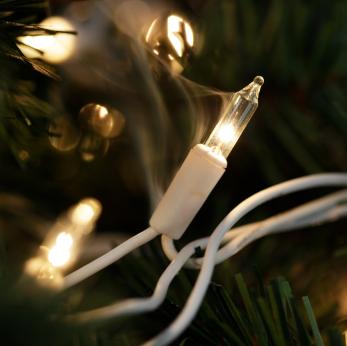 O Christmas tree, o Christmas tree, how dangerous they can be. Although a festive part of the season, Christmas trees present a fire hazard whether they’re real or artificial.
O Christmas tree, o Christmas tree, how dangerous they can be. Although a festive part of the season, Christmas trees present a fire hazard whether they’re real or artificial.
When a Christmas tree fire occurs, it’s likely to be serious. According to the National Fire Protection Association, one of every 66 reported fires that began with a Christmas tree resulted in death.
NFPA data indicates that from 2006-2010, U.S. fire departments responded to an average of 230 home fires that started with Christmas trees per year. These fires caused an average of 4 deaths, 21 injuries, and $17.3 million in direct property damage each year.
A heat source too close to the Christmas tree started one of every five (18 percent) of these fires.
Nineteen percent of home Christmas tree structure fires were intentionally set. Nearly three-fourths (72 percent) of the intentionally set Christmas tree fires occurred in the 15 days after Christmas and may have been related to someone trying to dispose of their tree by incineration.
Electrical failures or malfunctions were involved in one-third (31 percent) of the home Christmas tree structure fires. Nearly one in five (18 percent) occurred because some type of heat source was too close to the tree.
Decorative lights on line voltage were involved in 14 percent of these incidents. Nine percent of home Christmas tree fires were started by candles.
The risk of fire is higher with natural trees than artificial ones. Researchers found that dry natural trees burned easily but trees that had been kept moist are unlikely to catch fire unintentionally.
Holiday lights and other decorative lighting with line voltage were involved in an estimated average of 160 home structure fires per year in this same period. These fires caused an average of nine civilian deaths, 13 civilian injuries, and $9.0 million in direct property damage per year.
Almost half (45 percent) occurred in December and 12 percent were in January. Seventeen percent of these fires began with Christmas trees. Electrical failures or malfunctions were factors in two-thirds (69 percent) of the fires involving holiday or decorative lights.
Just setting up lights and decorations can present a hazard. In a study of fall-related injuries during the holiday season, an estimated 5,800 fall injuries related to holiday decorating were treated at hospital emergency rooms between November 1 and January 31 in 2000-2001, 2001-2002, and 2002-2003.
With 43 percent of the injuries resulting from falls from ladders and 13 percent caused by falls from the roof, it appears that the majority of these falls occurred during outdoor decorating.
Falls from furniture, typically inside the structure, accounted for 11 percent of the injuries. Some falls occurred when people tripped over or slipped on tree skirts or other decorations.
The NFPA offers the following safety tips for the Christmas season:
Picking the tree
• If you have an artificial tree, be sure it is labeled, certified, or identified by the manufacturer as fire retardant.
• Choose a tree with fresh, green needles that do not fall off when touched.
Placing the tree
• Before placing the tree in the stand, cut 1–2” from the base of the trunk.
• Make sure the tree is at least three feet away from any heat source, like fireplaces, radiators, candles, heat vents or lights.
• Make sure the tree is not blocking an exit.
• Add water to the tree stand. Be sure to add water daily.
Lighting the tree
• Use lights that have the label of an independent testing laboratory. Some lights are only for indoor or outdoor use, but not both.
• Replace any string of lights with worn or broken cords or loose bulb connections. Connect no more than three strands of mini string sets and a maximum of 50 bulbs for screw-in bulbs. Read manufacturer’s instructions for number of LED strands to connect.
• Never use lit candles to decorate the tree.
• Always turn off Christmas tree lights before leaving home or going to bed.
After Christmas
• Get rid of the tree when it begins dropping needles. Dried-out trees are a fire danger and should not be left in the home or garage, or placed outside against the home. Check with community to find a recycling program. Bring outdoor electrical lights inside after the holidays to prevent hazards and make them last longer.












